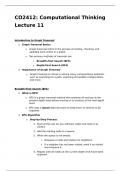Mass Communications and Techniques
Elements of Promotion Mix
Advertising – it is a paid and a non-personal communication of ideas/products in the prime
media. Examples: TV, Press, Posters, Journals.
Sales promotion – this includes incentives offered to the customers to stimulate purchase.
Examples: special offers
Publicity – communications for product/business by placing information about it without paying
for time/space directly is called publicity. Examples: blogs and media intervals.
Sponsorship – this refers to the association of the company with any
individual/event/organization. The person chosen is generally popular and generates sales
benefits.
Direct Marketing – it is the distribution of product in an informal way. This gives consumers
information and beneficial benefits through an interactive and communicative way.
Digital Marketing – the information about the product and promotion is done via digital
technologies. It includes sending mails, texts.
Personal Selling – oral communication with prospective purchases is called personal selling.
Integrated Marketing Communications
The mixing of the various communication tools, such that they are consistent, complement each
other and ensure a firms positioning in the minds of the customers, is necessary. This is what is
meant by the concept of integrated marketing Communications (IMC). The decisions which
affect it are as follows –
1. Resource availability/Cost of promotional tools – monetary resource plays a very special
role in deciding the type of promotion. Advertising campaigns can be very expensive sometimes.
2. Market Size and concentration – For small/economical markets, personal selling is effective
but in geographical diverse markets, the ultimate customer can be reached effectively by
advertising and direct marketing.
3. Customer information needs – for complex/technical information, personal selling is
preferred. For brand image, advertising is more sensible.
4. Product Characteristics – industrial goods companies tend to spend more on personal
selling in contrast to consumer’s goods which opt for advertising.
5. Push VS Pull Strategies – Distribution push strategy involves an attempt to sell into
channel intermediaries (example: retailers) and is dependent on personal selling/trade
promotions. Consumer Pull bypasses intermediaries to communicate to customers directly.
Consumer demand persuades intermediaries to stock the product. Advertisements and
Consumer promotions are made.
Elements of Promotion Mix
Advertising – it is a paid and a non-personal communication of ideas/products in the prime
media. Examples: TV, Press, Posters, Journals.
Sales promotion – this includes incentives offered to the customers to stimulate purchase.
Examples: special offers
Publicity – communications for product/business by placing information about it without paying
for time/space directly is called publicity. Examples: blogs and media intervals.
Sponsorship – this refers to the association of the company with any
individual/event/organization. The person chosen is generally popular and generates sales
benefits.
Direct Marketing – it is the distribution of product in an informal way. This gives consumers
information and beneficial benefits through an interactive and communicative way.
Digital Marketing – the information about the product and promotion is done via digital
technologies. It includes sending mails, texts.
Personal Selling – oral communication with prospective purchases is called personal selling.
Integrated Marketing Communications
The mixing of the various communication tools, such that they are consistent, complement each
other and ensure a firms positioning in the minds of the customers, is necessary. This is what is
meant by the concept of integrated marketing Communications (IMC). The decisions which
affect it are as follows –
1. Resource availability/Cost of promotional tools – monetary resource plays a very special
role in deciding the type of promotion. Advertising campaigns can be very expensive sometimes.
2. Market Size and concentration – For small/economical markets, personal selling is effective
but in geographical diverse markets, the ultimate customer can be reached effectively by
advertising and direct marketing.
3. Customer information needs – for complex/technical information, personal selling is
preferred. For brand image, advertising is more sensible.
4. Product Characteristics – industrial goods companies tend to spend more on personal
selling in contrast to consumer’s goods which opt for advertising.
5. Push VS Pull Strategies – Distribution push strategy involves an attempt to sell into
channel intermediaries (example: retailers) and is dependent on personal selling/trade
promotions. Consumer Pull bypasses intermediaries to communicate to customers directly.
Consumer demand persuades intermediaries to stock the product. Advertisements and
Consumer promotions are made.











